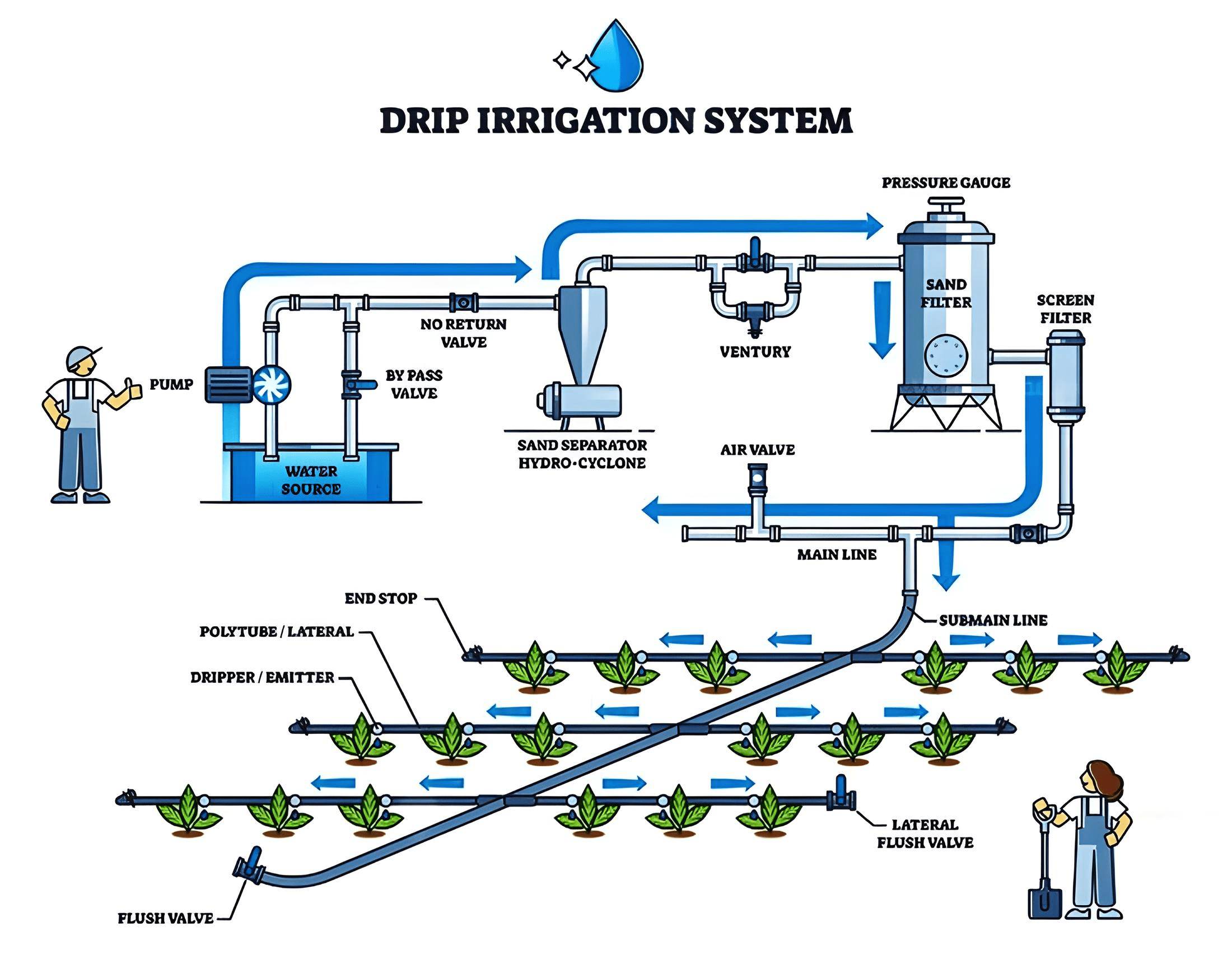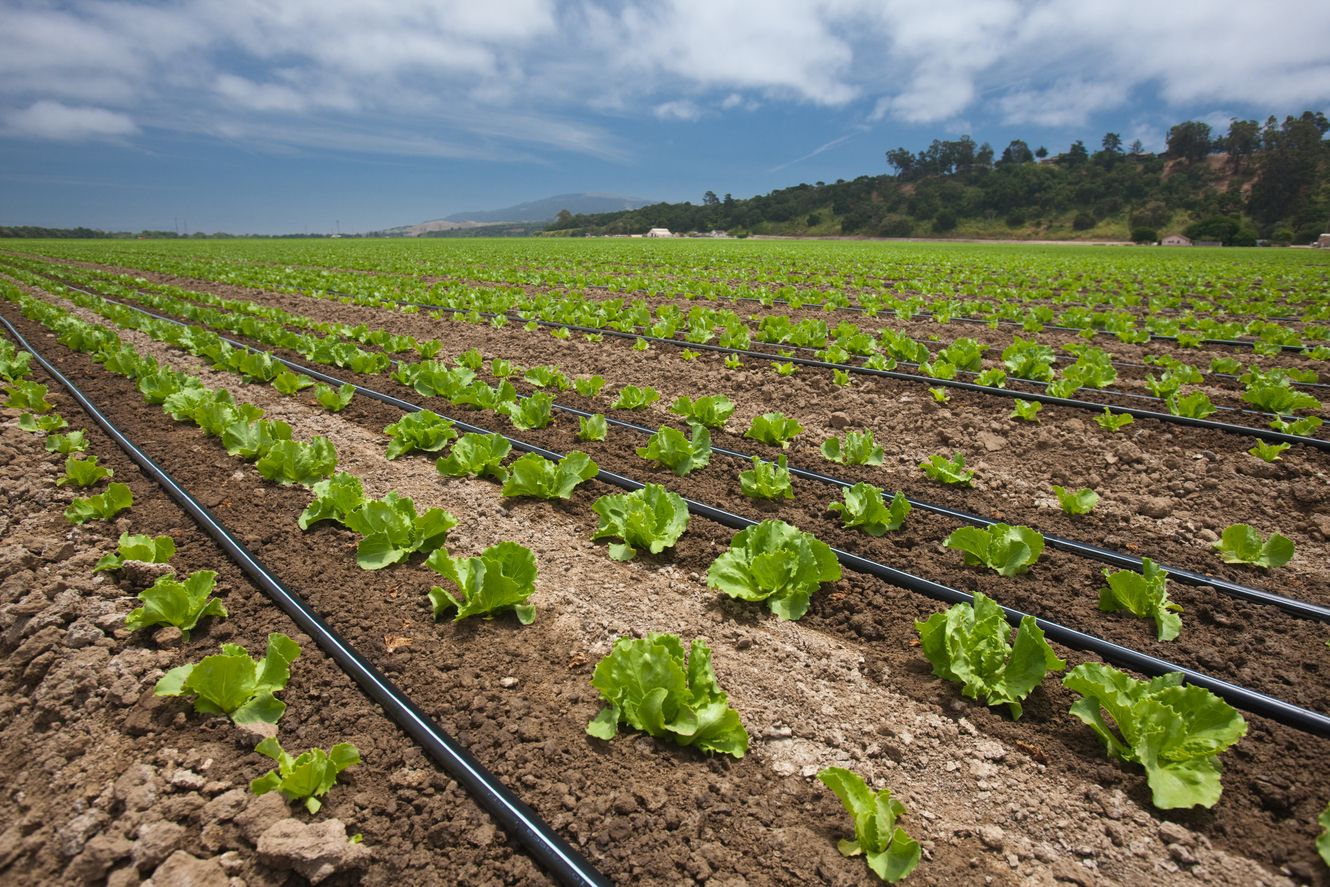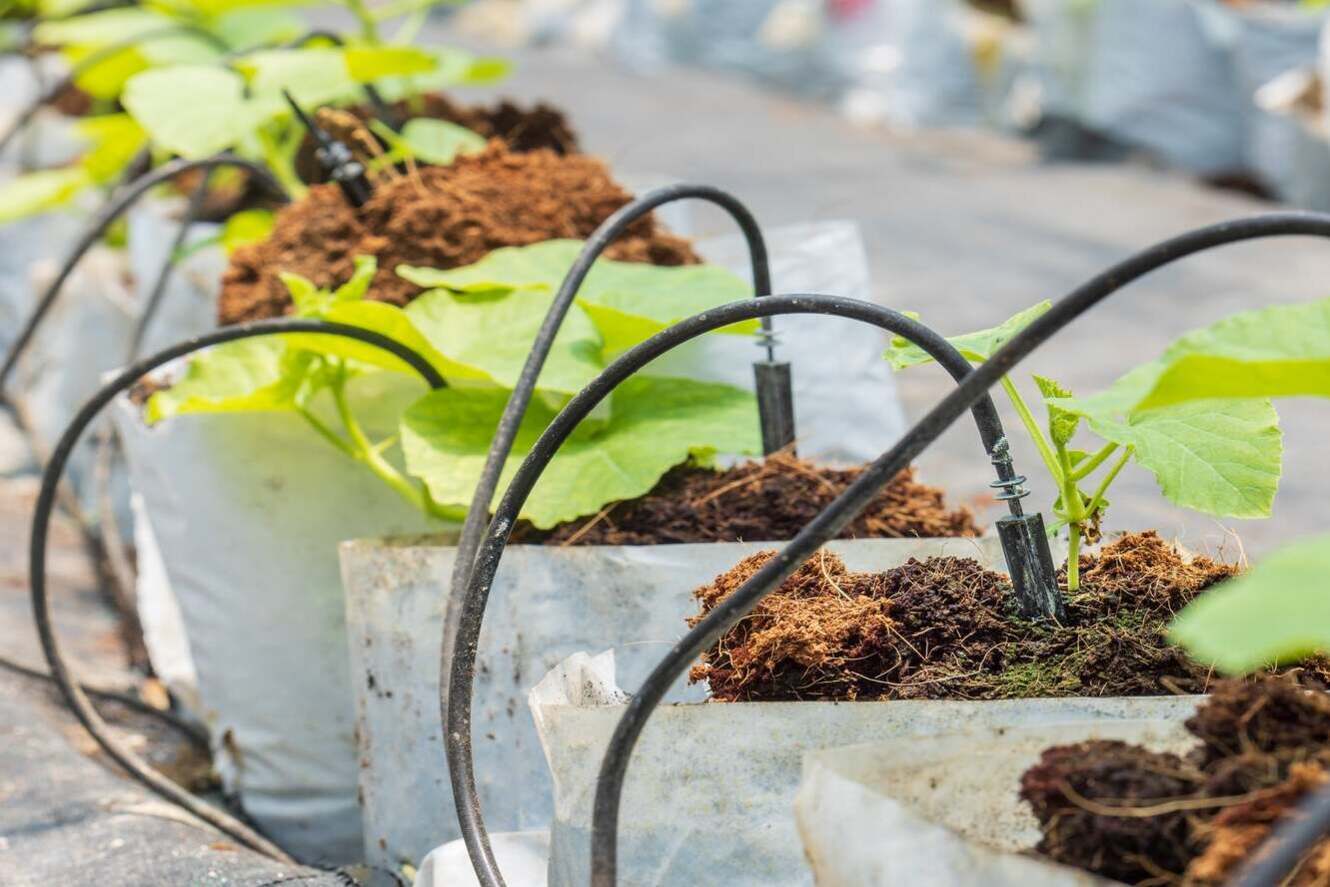1. Water Conservation
Drip irrigation applies water directly to the root zone of plants, minimizing evaporation and runoff. This targeted approach can save up to 30-50% of water compared to traditional irrigation methods like sprinklers or flood irrigation.
2. Increased Crop Yield
By providing consistent and precise water delivery, drip irrigation helps maintain optimal soil moisture levels, which can lead to healthier plants and increased crop yields. Plants receive water at the right time and in the right amount, reducing stress and promoting better growth.
3. Reduced Weed Growth
Since water is delivered directly to the plant roots, the surrounding soil remains drier, which inhibits the growth of weeds. This reduces the need for herbicides and manual weeding.
4. Soil Erosion Prevention
Drip irrigation minimizes the risk of soil erosion since water is applied slowly and directly to the root zone. This is especially important in areas with loose or sandy soils.
5. Nutrient Management
Drip irrigation systems can be combined with fertigation (the application of fertilizers through the irrigation system), allowing for precise nutrient delivery directly to the plant roots. This can improve nutrient uptake efficiency and reduce fertilizer waste.
6. Adaptability to Various Terrains
Drip irrigation is highly adaptable and can be used in a variety of terrains, including hilly or uneven landscapes where other irrigation methods might be less effective.
7. Reduced Disease Pressure
By keeping the foliage dry, drip irrigation reduces the incidence of fungal diseases and other pathogens that thrive in moist environments. This can lead to healthier plants and lower pesticide use.
8. Energy Efficiency
Drip irrigation systems typically require less energy to operate compared to other irrigation methods, as they use lower water pressure and flow rates. This can result in energy savings and reduced operational costs.
9. Scalability and Flexibility
Drip irrigation systems can be easily scaled and customized to suit different sizes of agricultural fields or gardens. They can be adjusted to meet the specific water needs of different crops.
10. Environmental Benefits
By conserving water and reducing chemical runoff, drip irrigation can have positive environmental impacts. It helps in the sustainable use of water resources and can contribute to the overall health of the ecosystem.


